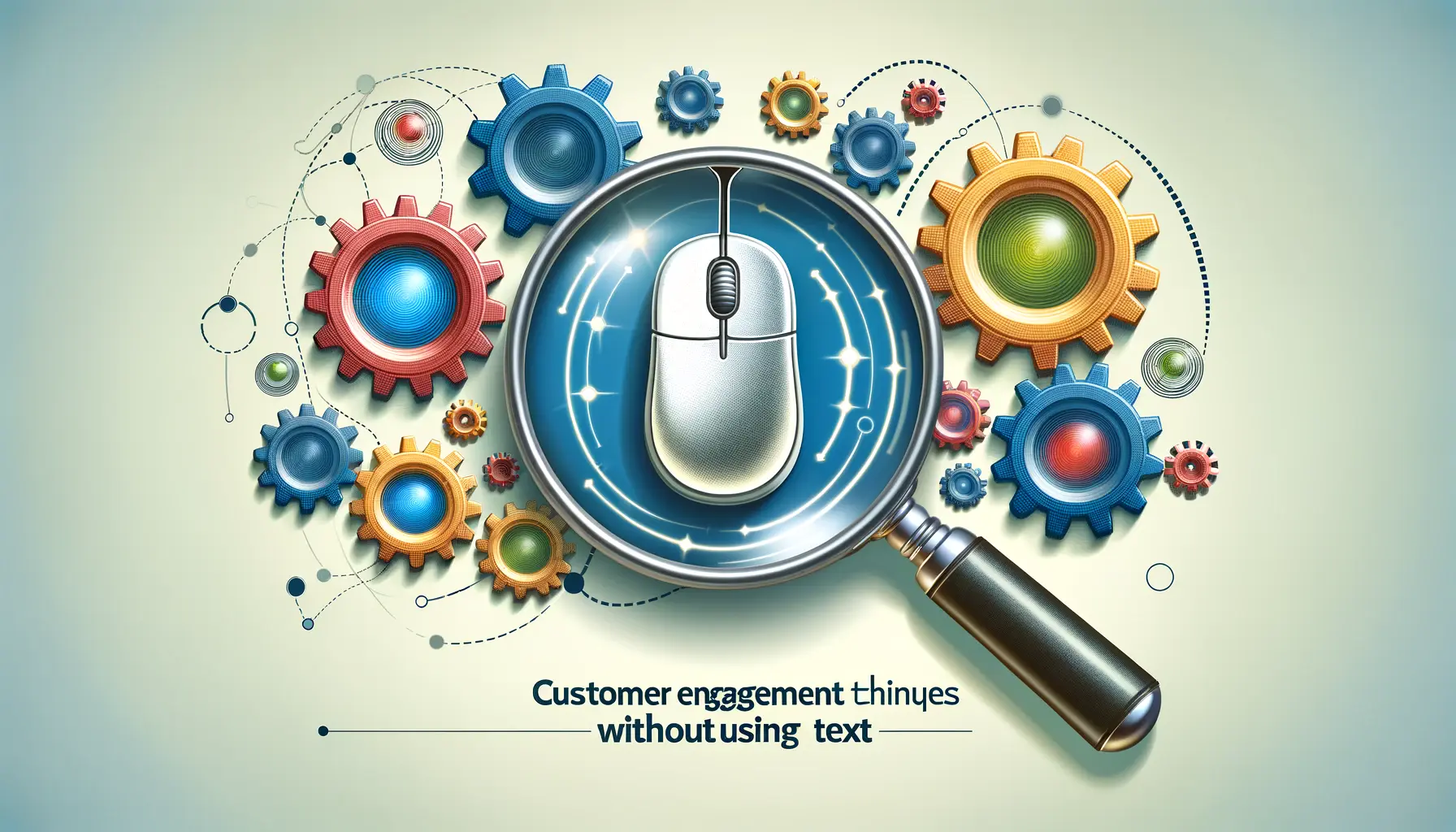Engaging customers has become a pivotal aspect of digital marketing, particularly for businesses aiming to enhance their online presence and SEO performance.
In today’s digital age, where the internet is saturated with content, standing out requires more than just having a website or social media presence.
It demands a strategic approach to customer engagement, one that not only draws visitors to your site but also encourages them to interact, stay longer, and return.
This article delves into the essence of customer engagement and its undeniable impact on SEO, especially for review sites looking to climb the ranks in search engine results.
At its core, customer engagement is about creating meaningful interactions between a brand and its audience.
It’s a strategy that goes beyond mere transactions, aiming to build a loyal community around your brand.
This approach is crucial for SEO for review sites, as engaged customers are more likely to leave reviews, share content, and contribute to the site’s organic growth.
By focusing on customer engagement, businesses can improve their SEO performance, driving more organic traffic and enhancing their online visibility.
- Understanding Customer Engagement in SEO
- Optimizing Content for Engagement
- Enhancing User Experience for Better Engagement
- Leveraging Social Media for Engagement
- Personalization and Segmentation
- Building a Community Around Your Brand
- Implementing Effective Call-to-Actions
- Maximizing SEO Through Strategic Customer Engagement
- FAQs on Customer Engagement Strategies for Better SEO
Understanding Customer Engagement in SEO
Customer engagement and SEO are intertwined in the digital marketing ecosystem.
Engaging content not only captivates your audience but also signals search engines that your site provides value, thereby improving your search rankings.
For review sites, where content is king, engaging your audience can lead to an increase in user-generated content, such as reviews and comments, which are gold mines for SEO.
These interactions not only provide fresh, relevant content but also improve keyword diversity and density naturally.
Moreover, search engines like Google place a high value on user experience metrics, such as dwell time and bounce rate, which are directly influenced by how engaged your visitors are.
A site that keeps its visitors engaged with high-quality content, interactive elements, and a seamless user experience is more likely to be rewarded with higher search rankings.
This is particularly important for SEO for review sites, where credibility and authority are crucial for attracting and retaining visitors.
Strategies to Boost Engagement
To enhance customer engagement, review sites must adopt a multi-faceted approach.
This includes creating compelling content that resonates with your audience, optimizing site speed and mobile responsiveness, and incorporating interactive elements such as polls, quizzes, and comment sections.
Personalization plays a key role in engagement; by tailoring content and recommendations based on user behavior and preferences, sites can create a more engaging and relevant experience for each visitor.
Another effective strategy is leveraging social proof through customer reviews and testimonials.
Highlighting positive reviews and ratings not only builds trust with potential customers but also encourages more users to leave their feedback, creating a virtuous cycle of engagement and content generation.
Engaging with your audience through social media and email marketing can also drive traffic back to your site, further boosting your SEO efforts.
Effective customer engagement strategies can significantly enhance SEO performance, particularly for review sites, by improving user experience metrics and generating valuable user-generated content.
Optimizing Content for Engagement
Content is the cornerstone of any successful customer engagement and SEO strategy, especially for review sites.
The goal is to craft content that not only ranks well on search engines but also genuinely interests and engages your audience.
Here’s how to optimize your content for better engagement:
Creating Valuable and Relevant Content
Understanding your audience is the first step towards creating content that resonates with them.
Conduct thorough research to identify the topics, questions, and issues most relevant to your audience.
Then, create comprehensive, informative, and engaging content that addresses these points.
Remember, content that adds value to your audience is more likely to be shared, discussed, and engaged with, thereby improving your site’s SEO.
Utilizing Visuals and Multimedia
Integrating visuals, videos, infographics, and other multimedia elements can significantly enhance the appeal of your content.
Visuals not only break up text-heavy content but also help in explaining complex information more effectively.
They can increase the time visitors spend on your site, which is a positive signal to search engines.
- Use High-Quality Images: Incorporate relevant, high-quality images to make your content more visually appealing and engaging.
- Embed Videos: Videos can be incredibly engaging and are an excellent way to keep visitors on your page longer. Consider creating product reviews, tutorials, or behind-the-scenes videos.
- Include Infographics: Infographics are great for summarizing data or explaining complex topics in an easily digestible format.
Improving Readability
Ensuring your content is easily readable and accessible is crucial for keeping your audience engaged.
Use short paragraphs, bullet points, and subheadings to break up your text and make it easier to scan.
Additionally, write in a conversational tone to make your content more relatable and engaging.
Encouraging User-Generated Content
User-generated content, such as customer reviews, Q&As, and comments, not only enriches your site with fresh, relevant content but also significantly boosts engagement.
Encourage your users to leave reviews, share their experiences, and participate in discussions.
This not only fosters a sense of community but also contributes to your site’s SEO by increasing content volume and relevance.
Incorporating user-generated content strategies can transform passive visitors into active community members, enhancing both engagement and SEO.
Enhancing User Experience for Better Engagement
The user experience (UX) of your website plays a critical role in customer engagement and, by extension, SEO.
A site that is easy to navigate, fast, and responsive is more likely to retain visitors and encourage them to interact with your content.
Here are key strategies to enhance UX for better engagement:
Site Speed Optimization
One of the first steps in improving UX is to ensure your site loads quickly.
Site speed is a significant factor in search engine rankings and user satisfaction.
Use tools like Google’s PageSpeed Insights to identify and fix common issues that slow down your site, such as large image files, slow server response times, and bulky code.
Mobile Responsiveness
With the increasing prevalence of mobile browsing, having a mobile-responsive site is no longer optional.
Ensure your site’s design adjusts seamlessly to different screen sizes and resolutions.
A mobile-friendly site not only provides a better experience for mobile users but also ranks higher in mobile search results.
- Implement Responsive Design: Use a responsive design that automatically adjusts to fit the screen size of the device being used.
- Optimize for Touch: Ensure buttons and links are easy to tap on a touchscreen device.
- Compress Images: Use image compression to speed up loading times on mobile devices without sacrificing quality.
Clear Navigation
A well-structured, intuitive navigation system helps visitors find what they’re looking for quickly and easily.
Use clear, descriptive labels for your navigation links and organize content in a logical manner.
Including a search function can also significantly improve the user experience by allowing visitors to find specific content directly.
Interactive Elements
Incorporating interactive elements such as quizzes, polls, or interactive infographics can significantly increase engagement by making the user experience more dynamic and personalized.
These elements encourage users to interact with your content, providing valuable feedback and insights in the process.
Improving the user experience of your site is a continuous process that can lead to significant gains in customer engagement and SEO performance.
Leveraging Social Media for Engagement
Social media platforms are invaluable tools for enhancing customer engagement and indirectly boosting your SEO.
By actively participating on social media, you can drive traffic to your site, increase brand awareness, and foster a community around your brand.
Here’s how to effectively leverage social media for engagement:
Consistent Brand Presence
Establish a consistent brand presence across all your social media channels.
Use your brand logo, colors, and voice to create a cohesive experience that reflects your brand’s personality.
Consistency helps in building brand recognition and trust among your audience, encouraging them to engage with your content.
Engaging Content Creation
Create content that is tailored to the interests and needs of your social media audience.
This could include behind-the-scenes looks, user-generated content, polls, and contests.
Engaging content encourages shares, comments, and interactions, which can drive traffic back to your site and improve your SEO.
- Share Visual Content: Images and videos tend to perform well on social media, capturing attention and encouraging shares and likes.
- Host Live Sessions: Live videos or Q&A sessions can engage your audience in real-time, providing a platform for direct interaction.
- Utilize Stories: Use stories on platforms like Instagram and Facebook to share timely content, offers, or updates that engage users in a more casual and direct manner.
Community Engagement
Actively engage with your followers by responding to comments, messages, and mentions.
Participation shows that you value your audience’s input and are interested in building a relationship with them.
This level of engagement can turn followers into brand advocates who are more likely to share your content and contribute to your site’s SEO through increased traffic and backlinks.
Analytics and Adaptation
Use social media analytics tools to track the performance of your content and understand your audience’s behavior.
Analyzing metrics such as engagement rates, click-through rates, and conversion rates can provide insights into what content resonates with your audience.
Use this data to refine your social media strategy, focusing on what works best for engaging your audience and driving traffic to your site.
Social media is a powerful channel for engaging with your audience and driving traffic to your site, which can indirectly improve your SEO performance.
Personalization and Segmentation
Personalization and segmentation are key strategies for enhancing customer engagement and, consequently, SEO.
By tailoring your content and marketing messages to meet the specific needs and preferences of your audience segments, you can significantly increase engagement rates.
Here’s how to implement these strategies effectively:
Understanding Your Audience
The first step in personalization is to understand your audience deeply.
Use data analytics tools to gather insights into your audience’s demographics, behavior, preferences, and pain points.
This information allows you to segment your audience into smaller, more targeted groups, each with specific characteristics and needs.
Creating Targeted Content
Once you’ve identified your audience segments, create content that speaks directly to the interests and needs of each group.
Tailored content is more likely to resonate with your audience, leading to higher engagement rates.
This could include personalized email campaigns, targeted landing pages, or customized product recommendations.
- Email Personalization: Use customer data to personalize email communications, such as including the recipient’s name or recommending products based on past purchases.
- Dynamic Content: Implement dynamic content on your website that changes based on the user’s behavior, location, or other relevant factors.
- User Profiles: Allow users to create profiles on your site to offer a more personalized experience, such as saving favorite products or content.
Leveraging Technology for Personalization
Technology plays a crucial role in enabling personalization at scale.
Use marketing automation tools, CRM systems, and AI-driven algorithms to automate the process of delivering personalized content and recommendations to your audience.
These technologies can help you manage and analyze large amounts of data to create highly targeted marketing campaigns.
Measuring and Optimizing
Personalization and segmentation are ongoing processes that require continuous measurement and optimization.
Regularly analyze the performance of your personalized content and campaigns to see what’s working and what’s not.
Use A/B testing to experiment with different approaches and refine your strategy based on real-world data.
Personalization and segmentation not only improve customer engagement but also enhance the relevance and performance of your content in search engines, contributing to better SEO results.
Building a Community Around Your Brand
Creating a sense of community around your brand is a powerful way to boost customer engagement and, indirectly, SEO.
A strong community not only fosters loyalty and repeat visits but also generates content and social signals that can improve your search engine rankings.
Here’s how to build and nurture a community around your brand:
Encourage User Interaction
Encourage your users to interact with your brand and each other by providing platforms for discussion, such as forums, comment sections, or social media groups.
These interactions can create a rich source of user-generated content, which is valuable for SEO.
Moreover, they help users feel more connected to your brand and each other, fostering a sense of belonging.
Create Shareable Content
Creating content that users are excited to share with their networks is a great way to expand your community and improve SEO.
This could include informative blog posts, engaging videos, or interactive tools.
Shareable content not only brings more visitors to your site but also increases backlinks and social signals, both of which are important for SEO.
- Host Contests and Giveaways: Contests and giveaways can generate excitement and encourage users to share your content with their networks.
- Feature User-Generated Content: Showcasing content created by your users, such as reviews or photos, can encourage others to share their experiences as well.
- Engage on Social Media: Regularly engaging with your followers on social media can help build a loyal community that is more likely to share your content.
Offer Exclusive Benefits
Offering exclusive benefits to your community members can make them feel valued and encourage long-term engagement.
This could include access to premium content, special discounts, or early access to new products.
Exclusive benefits not only reward your most loyal users but also incentivize others to join and participate in your community.
Listen and Respond to Feedback
Listening to your community and responding to their feedback is crucial for building trust and loyalty.
Use surveys, social media, and direct communication to gather feedback and make it clear that you value your users’ opinions.
Acting on this feedback can improve your products, content, and overall user experience, leading to a more engaged and loyal community.
Building a community around your brand is a long-term investment that can pay dividends in terms of customer loyalty, engagement, and SEO. By fostering a sense of belonging and actively engaging with your users, you can create a vibrant community that supports your brand’s growth.
Implementing Effective Call-to-Actions
Call-to-actions (CTAs) are pivotal in guiding your audience towards desired actions, significantly impacting customer engagement and SEO.
An effective CTA not only prompts an action but also enhances user experience by providing clear direction.
Here’s how to craft CTAs that engage and convert:
Clarity and Conciseness
Your CTAs should be clear and concise, leaving no doubt about what action you want the user to take.
Use strong, action-oriented verbs and keep the message short.
A well-crafted CTA reduces hesitation and guides users smoothly through their journey on your site, contributing to a positive user experience and lower bounce rates.
Visibility and Design
CTAs should be visually striking and easy to find without overwhelming the content.
Use colors that stand out from the rest of your page but still fit within your brand’s color scheme.
The design and placement of your CTAs can significantly affect their performance, influencing both engagement rates and SEO by encouraging more interactions and conversions.
- Above the Fold: Place important CTAs above the fold to ensure they’re seen without scrolling.
- Contrasting Colors: Use contrasting colors for your CTA buttons to make them stand out.
- Size Matters: Ensure your CTA buttons are large enough to be easily tapped on mobile devices.
Personalization and Relevance
Personalizing CTAs based on the user’s behavior, preferences, or stage in the customer journey can dramatically increase their effectiveness.
Tailored CTAs resonate more with users, making them more likely to take action.
This personal touch not only improves engagement but also signals to search engines that your site provides a valuable and tailored user experience.
Testing and Optimization
Continuously testing different CTA elements, such as wording, color, and placement, can provide insights into what works best for your audience.
A/B testing allows you to compare different versions of your CTAs to see which one performs better, enabling you to optimize them for maximum engagement and conversion rates.
Assuming all CTAs will perform the same regardless of their design or placement is a common mistake. Tailoring and testing your CTAs are crucial steps towards improving engagement and SEO.
Maximizing SEO Through Strategic Customer Engagement
In the digital age, where competition for online visibility is fierce, mastering the art of customer engagement has become crucial for businesses aiming to improve their SEO.
This comprehensive exploration has underscored the symbiotic relationship between customer engagement strategies and SEO performance, particularly for review sites.
By implementing the strategies discussed, businesses can not only enhance their online presence but also foster a loyal community around their brand.
Key Takeaways for Enhanced Engagement and SEO
From optimizing content for engagement to leveraging social media and personalizing user experiences, the strategies outlined offer a roadmap for businesses to captivate their audience.
Effective call-to-actions play a pivotal role in guiding users towards desired actions, further amplifying engagement and, by extension, SEO.
Here are the key takeaways:
- Content that resonates with your audience boosts engagement and SEO.
- Enhancing user experience is fundamental for keeping visitors engaged.
- Social media is a powerful tool for building community and driving traffic.
- Personalization and segmentation cater to specific user needs, improving engagement.
- Community building around your brand encourages loyalty and user-generated content.
- Effective CTAs guide users, contributing to a seamless user experience.
Forging Ahead: Engagement as the Cornerstone of SEO
As we forge ahead, it’s clear that customer engagement is not just a component of SEO but its cornerstone.
The dynamic nature of digital marketing demands that businesses stay agile, continuously adapting their strategies to meet the evolving needs of their audience.
By focusing on creating meaningful interactions and providing value at every touchpoint, businesses can achieve a competitive edge in the digital landscape.
In conclusion, the integration of customer engagement strategies into SEO efforts is not just beneficial but essential for businesses aiming to thrive online.
It’s a holistic approach that not only improves search rankings but also builds a strong, engaged community around your brand.
As we’ve seen, the path to better SEO is paved with engaged customers, and by following the strategies outlined, businesses can walk this path with confidence.
Want your website to top Google search rankings? Leave the SEO to our professional agency!
FAQs on Customer Engagement Strategies for Better SEO
Explore common questions about enhancing your SEO through effective customer engagement strategies.
Customer engagement in SEO refers to strategies aimed at increasing interactions between a brand and its audience to improve search rankings.
High-quality, relevant content increases user engagement, which search engines reward with higher rankings.
Yes, active social media engagement can drive traffic to your site and generate social signals that indirectly boost SEO.
Mobile responsiveness enhances user experience on mobile devices, a key factor in search engine rankings.
Personalized CTAs increase user engagement and conversion rates, signaling to search engines that your content is valuable.
User-generated content like reviews and comments provides fresh, relevant content, boosting your site’s SEO.
Site speed is crucial for keeping users engaged and reducing bounce rates, positively impacting SEO.
Yes, by catering to specific audience needs, segmentation and personalization enhance engagement, indirectly benefiting SEO.













